Custom FRP Trench Drains Speed Up FGD System Installation
Since the introduction of the 1970 Clean Air Act (CAA), coal-fired power plants in the U.S. have been required to reduce undesirable emissions, particularly those of sulfur dioxide (SO2). Title IV of the CAA, also called the Acid Rain Program, set a further goal of reducing SO2 emissions by 10 million tons below 1980 levels. Phase I began in 1995 with controlling the emissions from almost 450 coal-fired units at more than 100 plants in the eastern U.S., thereby reducing SO2 emissions by almost 40%. Phase II began in 2000, continuing to reduce SO2 emissions and adding utility units larger than 25 MW.
The Clean Air Interstate Rule (CAIR) was promulgated in 2005 to manage emissions that drift from one state to another and to further reduce SO2 by an estimated 70%. The latest developments regarding CAIR are discussed in “Nation’s NOx Emissions Continue to Drop While Court Reinstates CAIR” in this issue of COAL POWER.
The favored SO2 removal process when dealing with stack gas is the wet scrubber; removal levels of 95% have been reported. Scrubbing SO2 from waste gas is a water-intensive process, necessitating effective trench drainage and sumps that will have a long life in a difficult environment. However, the flue gas desulfurization process requires the use of aggressive liquids that significantly shorten the life of typical construction materials such as metals and concrete. Fiberglass-reinforced plastic (FRP) is the material of choice for many components in a typical FGD system, including slurry recirculating piping, absorber vessels, and duct liners—among them, stack and chimney liners.
Prefab Trench Assemblies Save Time
ACO Polymer Products is the world leader in trench drainage, and the company manufactures a wide range of products for various applications. The ACO Aquaduct division further specializes in designing and manufacturing large-scale projects, using custom FRP trench drain systems to accommodate complex layouts around equipment in various industrial facilities. Since no two power plant drainage projects are ever the same, owners and contractors must work closely with their suppliers to obtain the right product fabricated with the right materials.
In brief, there are two methods of constructing a drainage system at a power facility. The first involves creating cast-in-place concrete trenches that are formed on-site. This approach requires extensive labor to construct the formwork for the drainage channels and sumps. When complex layouts, unusual angles, and varying slopes are involved, the costs escalate quickly. Additionally, in order to provide corrosion resistance, concrete channels must be coated once the concrete has cured. This results in further expense and additional scheduling difficulties.
Using prefabricated assemblies is simpler, faster, and saves much installation time. Working from carefully engineered plans, long, lightweight FRP drain channels and related components can be factory-produced, where the manufacturing process is efficient and production is closely monitored to ensure a high-quality product. Drain channels and components are shipped to the job site when that phase of construction is ready to begin.
Channels are then set up and connected on-site with two-inch overlap joints that are easily and positively sealed. Because the FRP channels are made from highly corrosion-resistant material, there is no need for a secondarily applied coating. Once the concrete surrounds are placed, grates can be installed, and the site is ready for the next phase.
For example, an engineering, procurement, and construction contractor installing a flue gas desulfurization (FGD) system to serve two 800-MW units in the Midwest reported savings on the order of 20% using prefabricated FRP trench drain systems as compared to the cast-in-place concrete alternative. Scheduling was also simplified, as the time required for coating and curing was completely eliminated. While 20% is a significant difference in the up-front price, benefits are also realized down the line, in optimal drainage performance and ease of maintenance. Additional benefits include those that follow:
- FRP trench drains and sumps offer a much smoother surface than concrete, which promotes better flow velocity and hydraulic performance in general.
- FRP drains are easily customizable to fit complex layouts, and dimensional factors such as width, depth, slope, and profile can be varied much more easily than with cast-in-place concrete systems.
- There are many design options, including double containment, if needed.
- In the rare cases when on-site modification may be required, the nature of FRP enables easy modification.
Engineers and contractors should remember to get the supplier’s engineering team onboard early in the design process to ensure that construction materials for the drainage system, sumps, and grates are correctly selected early in the project.
To close, here’s a photo essay of a typical trench and sump project, from the factory to commercial service.
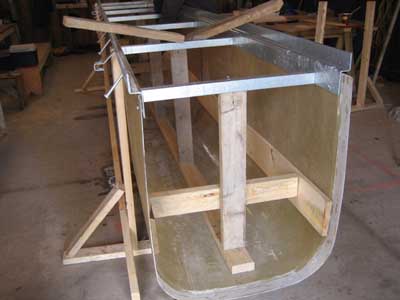
1. ACO Aquaduct factory production of prefabricated fiberglass-reinforced plastic (FRP) drain channels ensures consistent product quality. Courtesy: ACO Polymer Products
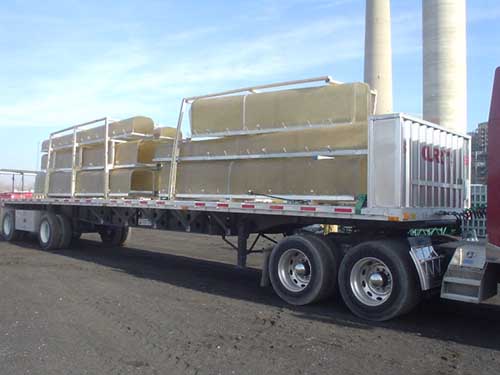
2. FRP trench drain channels are shipped to the power plant job site for fast installation. Courtesy: ACO Polymer Products
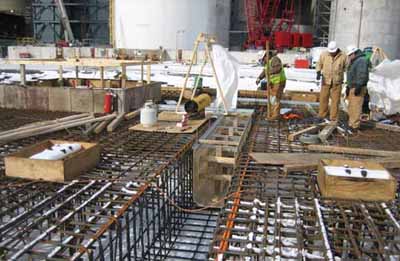
3. The prefabricated FRP trench drain channel is set into the rebar grid of a power facility’s flue gas desulfurization (FGD) system foundation prior to the concrete pour. Courtesy: ACO Polymer Products
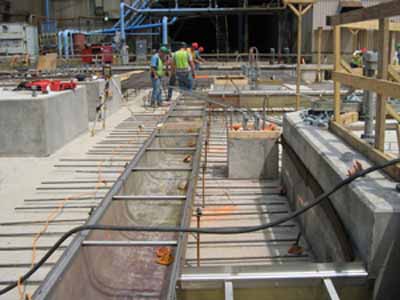
4. FRP trench drain sections are connected to form a run. Courtesy: ACO Polymer Products
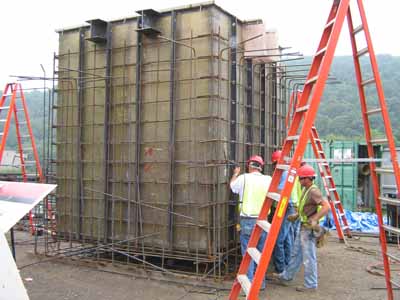
5. Prefabricated FRP sumps are also used in FGD systems to handle corrosive fluids. Courtesy: ACO Polymer Products
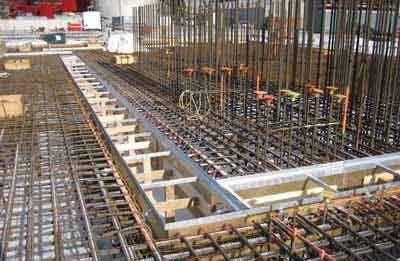
6. Installed trench drain runs and sumps are installed and ready for the concrete pour. Courtesy: ACO Polymer Products
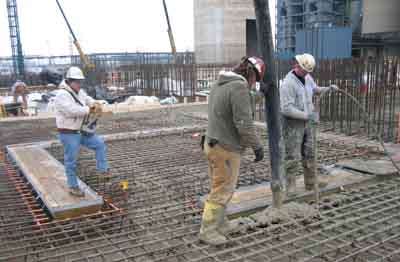
7. The concrete surround is poured around trench drains. Courtesy: ACO Polymer Products
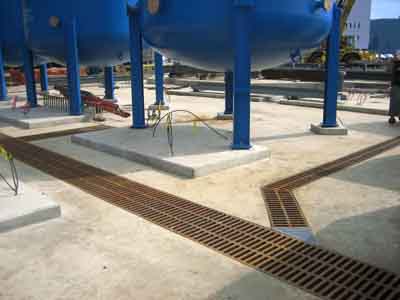
8. The completed trench drain and sump system is ready for use. Courtesy: ACO Polymer Products
—George S. Potter, PE ([email protected]) is the Aquaduct division manager for ACO Polymer Products.